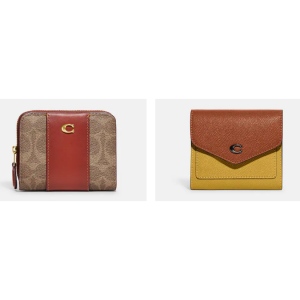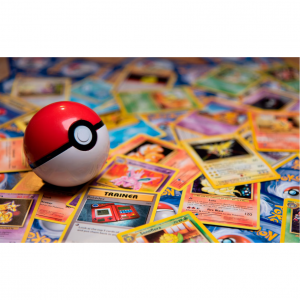
Red Bull Zero vs. Sugarfree vs. Regular: Differences and Reviews 2025
Are you confused about which Red Bull variant is right for you? In 2025, the choices of Red Bull Zero, Sugarfree, and Regular continue to perplex consumers. In this blog post, we'll delve deep into the differences among these three popular options and present comprehensive reviews to help you make an informed decision. Whether you're an energy drink enthusiast, a health-conscious individual, or simply curious about these beverages, this is the place to find all the details you need. Let's explore the world of Red Bull and discover which one suits your taste and lifestyle the best!
What are the most popular Red Bull drinks?
Three common Red Bull drinks are:
Red Bull Energy Drink: This is the classic version, known for providing an energy boost.
Red Bull Sugarfree: It offers the same energy benefits as the original but without sugar.
Red Bull Total Zero: Similar to the sugar-free version, it contains no sugar and claims to be extremely low in calories. (The drink was previously known as Red Bull Total Zero and sometimes Red Bull Zero Sugar, but its official name is now Red Bull Zero.)
What is Red Bull? Its origin and history? Its famous variants?
Red Bull is a well-known brand of energy drink.
Red Bull is derived from a similar stimulant, Krating Daeng, which originated in Thailand and was invented by pharmacist Chaleo Yoovidhya in 1975.
It contains water, sucrose, caffeine, taurine, inositol, and B vitamins and was a stimulant for rural laborers in Thailand. These ingredients were believed to increase alertness and provide a temporary energy boost.
While doing business in Thailand, Austrian entrepreneur Dietrich Mateschitz purchased a can of Krating Daeng and claimed it cured his jet lag.
Mateschitz sought to work with Yoovidhya and formulated a product to suit Western tastes, such as by carbonated the drink.
In 1984, the two founded Red Bull GmbH in Fuschl, Salzburg, Austria. After modifying the formula and ingredients to suit the tastes and preferences of the Western market, the company sold the first can of Red Bull in Austria in 1987.
Debuting in 1992, charming cartoon ads featuring the brand’s catchy slogan, “Red Bull gives you wings,” began to make the energy drink a household name.
Since its launch, Red Bull has gained immense popularity worldwide. The brand has also been involved in various sports and cultural events sponsorships, which has contributed to its wide recognition and success.
In 2003, Red Bull began to launch a variation of its drink, a sugar-free version that tasted different from the original, called Red Bull Sugarfree.
In 2012, Red Bull launched a zero-calorie version of Red Bull Total. In 2018, the company revamped Red Bull Total Zero and launched Red Bull Zero, a different sugar-free formula designed to taste closer to the original.
Quick View: Red Bull Zero vs. Sugar Free vs. Total Zero vs. Regular
Red Bull | Red Bull Sugarfree | Red Bull Zero | |
($21.98 (Pack of 12) FROM Walmart - Get Up To 4% Cash Back) | ($19.78 (Pack of 12) , was $21.98 FROM Walmart - Get Up To 4% Cash Back) | ($24.98 (Pack of 12) FROM Walmart - Get Up To 4% Cash Back) | |
Calories | 110 | 0 | 10 |
Total carbohydrate | 29g | 2g | 1g |
Added Sugars | 26g | 0g | 0g |
Caffeine Content | 80 mg/ 8.4 fl oz | 80 mg/ 8.4 fl oz | 80 mg/ 8.4 fl oz |
Sodium | 105mg | 105mg | 30mg |
Vitamins | B3, B5, B6 and B12 | B3, B5, B6 and B12 | B3, B5, B6 and B12 |
Ingredients | Carbonated Water, Sugar, Glucose, Citric Acid, Taurine, Natural and Artificial Flavors, Sodium Bicarbonate (Baking Soda), Magnesium Carbonate, Colors, Caffeine, Niacinamide, Pyridoxine HCl (Vitamin B6), Calcium Pantothenate, Vitamin B12. | Carbonated Water, Citric Acid, Taurine, Natural and Artificial Flavors, Sodium Bicarbonate (Baking Soda), Magnesium Carbonate, Colors, Caffeine, Aspartame, Acesulfame K, Xantham Gum, Niacinamide, Pyridoxine HCl (Vitamin B6), Calcium Pantothenate, Vitamin B12. | Carbonated Water, Citric Acid, Taurine, Natural and Artificial Flavors, Colors, Caffeine, Sodium Bicarbonate (Baking Soda), Magnesium Carbonate, Acesulfame K, Sucralose, Xanthan Gum, Niacinamide, Pyridoxine HCl (Vitamin B6), Calcium Pantothenate, Vitamin B12. |
Editor's review: Red Bull Zero vs. Sugar Free vs. Total Zero vs. Regular: Which is the Best Choice?
Although there are many different opinions, my top choice is Red Bull Sugar Free.

($19.78 (Pack of 12) , was $21.98 FROM Walmart - Get Up To 4% Cash Back)
First, it contains no added sugar, which is in line with the trend of low-sugar, low-carb, low-calorie diets. Zero sugar intake can help reduce some health risks, such as weight gain, frequent acne, and increased blood pressure.
Second, Red Bull Sugar Free has a light sweet and sour taste, but it is not too sweet. For me, the Zero Sugar version is a little too sweet. Red Bull Sugar Free has a more rounded taste, and the Zero Sugar taste has a bitter and artificial aftertaste.
For more details and differences in Red Bull products, please continue browsing below.
Red Bull Zero vs. Sugarfree vs. Regular: What are they similar about?
Similarities between Red Bull Zero, Sugarfree, and Regular include:
Energy-boosting ingredients: All three drinks contain ingredients such as caffeine, taurine, and B vitamins designed to provide an energy boost and increase alertness.
Branding and packaging: They share the Red Bull brand name and have a similar overall design and packaging style to maintain brand recognition.
Carbonation: They are all carbonated drinks with a fizzy texture.
Target audience: They are all marketed to individuals seeking an energy boost or improved performance, such as students, workers, and athletes.
Red Bull Zero vs. Sugarfree vs. Regular: What's the difference?
The differences between Red Bull Zero, Sugarfree, and Regular are as follows:
#1. Sugar content:
Regular Red Bull contains sugar and glucose. This is the sweet combination in Red Bull, sugar and glucose give this drink a unique and naturally sweet taste. Not only do they add to the overall flavor, but they also add to the calorie content.
Secondly, we all know that these carbonated compounds provide a quick source of energy. So the main selling point we like about this Red Bull is that it provides an instant boost of energy, making it a great choice for those who want a quick pick-me-up.
Red Bull Sugarfree is sugar-free. Sugar and glucose have been replaced with sweeteners sucralose and acesulfame potassium. This alteration reduces the calorie content, making it a suitable choice for those watching their sugar intake.
Red Bull Zero has no sugar at all and even has one gram less carbohydrate than the sugar-free version.
Conclusion:
Both Red Bull Sugarfree and Red Bull Zero are low-calorie drinks. An 8.4 fl oz (250 ml) drink contains only about 10 calories, so these are good choices for those watching their calorie intake.
In contrast, Red Bull contains a lot of calories and sugar, with a standard 8.4 fl oz (250 ml) can of regular Red Bull containing about 110 calories and about 27 grams of sugar. This high sugar content can lead to weight gain and other health problems if consumed in excess.
For those watching their sugar intake or looking to reduce their overall calorie intake, opting for a sugar-free or zero energy drink alternative may be a more appropriate choice.
Red Bull Sugarfree and Zero maintain the consistency of caffeine and taurine, ensuring that the energy boost remains the same. At the same time, Red Bull not only works, but also works fast, ensuring that you feel energetic within 5 minutes of drinking it.
#2. Calorie count:
Regular Red Bull has calories from sugar.
Sugarfree has fewer calories than the regular version.
Zero has the same calories as Sugarfree, also 110 calories. Many people misunderstand Red Bull Zero to mean no calories (because many popular sodas use Zero to mean no calories, such as my favorite Coke and Pepsi), but it actually means no sugar at all.
Conclusion:
Red Bull has 27 grams of sugar, which is on the high side.
The American Heart Association recommends limiting sugar intake to no more than 37.5 grams per day for men and 25 grams per day for women.
If you’re a woman, one can of Red Bull will put you over the limit. For men, after drinking an 8.4-ounce can of Red Bull, there’s not much wiggle room.
There’s absolutely nothing good about consuming that much sugar, especially added sugar. Excess sugar is a leading cause of type 2 diabetes, weight gain, premature aging, and tooth decay.
Therefore, I strongly recommend that you choose a sugar-free or zero-sugar version.
#3. Taste:
>> The Taste of Red Bull
Open a can of Red Bull and you’ll notice that its flavor has stood the test of time. The initial burst is a harmonious blend of sweet and sour, thanks to sucrose and glucose.
This iconic taste is often described as a unique experience that leaves an indelible mark on taste buds. It is this unique essence that has won a large number of fans around the world.
If we are to be specific, the taste of Red Bull can be described as a unique combination of sweet and sour with a hint of medicine. The original flavor of Red Bull can be likened to sweet and sour soda mixed with some medicine. The drink is carbonated, which adds to its overall taste.
In addition to the original flavor, citrus flavors can also be detected in Red Bull. The citrus flavor gives this energy drink a slightly sour taste. This citrus flavor complements the sweetness of the drink and may also be responsible for its refreshing quality.
The sweetness of Red Bull comes from the 27 grams of sugar in each 8.4 fluid ounce can of the drink. This candy-like sweetness is one of the main flavors people notice when they first try this drink.
>> The Taste of Red Bull Sugarfree
Red Bull Sugar Free caters to those who crave the familiar Red Bull kick but don’t want the sugar high. The absence of sucrose and glucose changes taste dynamics, resulting in a milder sweetness.
Artificial sweeteners acesulfame potassium and sucralose mimic the taste of sugar but without the calories.
The result is a lighter, less sweet taste that still retains the essence of the sweet and sour medicinal flavor of Red Bull’s unique flavor.
>> The Taste of Red Bull Zero
Red Bull Zero is designed to taste closer to the original. Sorry, that's not how I felt after tasting it.
First, it's not as bubbly as it could be. When I tasted the sugar-free version, my first impression was the rich bubbles swirling in my mouth. The original Red Bull also has some carbonation, which makes the iced drink extra chewy.
Second, the sweetness of Red Bull Zero is indeed similar to the original, which is what distinguishes them from the milder sugar-free version. But the taste of Red Bull Zero is not balanced, and it seems to have more bitterness due to the high ranking of caffeine in the ingredient list. The stronger acidity in the sugar-free version neutralizes the syrupy taste of the zero sugar version on the one hand, and the artificial aftertaste of sucralose on the other.
Conclusion:
In terms of taste, I like the original Red Bull the best. The flavor of the original Red Bull can be described as a balance between sweet and sour, with a slightly medicinal flavor that makes it unique. Due to its iconic status as a pioneer of modern energy drinks, this flavor has gained a cult following. Good thing, I am one of those followers.
As a loyal Red Bull drinker, one thing I appreciate is its lingering aftertaste. The sweetness from sucrose and glucose tends to leave a pleasant resonance on the taste buds. It is a signature ending to the taste journey that makes me linger.
But sometimes I am worried about too much sugar, then I will choose Red Bull Sugar Free. Red Bull Sugar Free contains artificial sweeteners and bids farewell to me with a cleaner aftertaste. There is no residue associated with sugar, so the taste experience will not last too long. Fortunately, it is more carbonated, smoother and milder than the zero sugar version. For those who like sugar-free drinks, Red Bull Sugar Free may be the first choice.
Although much of the information does not seem to be up to date, the sugar-free version uses acesulfame potassium and sucralose as sweeteners, just like the zero-sugar version, which means it removes aspartame.
FAQs
Question: What's the main difference in sugar content?
Answer: Regular Red Bull contains sugar, Red Bull Sugar Free has a reduced amount or uses sugar substitutes, and Red Bull Zero has no sugar at all.
Question: How do the calorie counts vary?
Answer: Regular Red Bull has calories from sugar. Sugar Free has fewer calories than Regular, and Zero has zero calories.
Question: Which one tastes the sweetest?
Answer: The Regular version is the sweetest due to its sugar content.
Question: Are the energy-boosting effects the same?
Answer: All three contain energy-boosting ingredients like caffeine and taurine, but the perceived effects can vary from person to person.
Question: Which is better for those on a diet?
Answer: Both Red Bull Sugar Free and Zero are better choices for those watching calorie and sugar intake.
Question: Do they have different effects on sleep if consumed close to bedtime?
Answer: All three contain caffeine, which can potentially affect sleep if consumed too close to bedtime, but the Regular version might have a slightly stronger impact due to its sugar content.
Question: How do they compare in terms of aftertaste?
Answer: Reviews suggest that the Regular version has a more natural sweet aftertaste. Sugar Free and Zero might have a slightly different aftertaste depending on the sugar substitutes used.
Question: Are there any differences in the ingredients besides sugar?
Answer: The amounts of some flavoring and preservative ingredients might vary slightly among the three.
Question: Which one is preferred by athletes?
Answer: Athletes often choose Sugar Free or Zero to avoid excess sugar intake during training or competition.
| Top 10 Most Carbonated Soda in the World 2025 |
| Top 10 Most Sugary Sodas in the World, Ranked 2025 |
| The 10 Top Lemon-Lime Flavored Drinks, From Soda to Sparkling Water |
| Top 10 Most Caffeinated Sodas in the World 2025 |
| Ginger Ales Shoutout: Canada Dry vs. Schweppes vs. Seagram's vs. Vernors? |
| Canada Dry Ginger Ale Zero Sugar vs. Regular: Differences and Reviews 2023 |
| Diet Mountain Dew vs. Zero Sugar vs. Regular: Differences and Reviews 2025 |
| Diet Dr Pepper vs. Dr Pepper Zero vs. Regular vs. Cream Soda: Differences and Reviews 2025 |
Diet Coke vs. Coca-Cola Zero Sugar vs. Regular Coca-Cola: Differences and Reviews 2025 |
| Everyday Dose vs. RYZE vs. MUD WTR: Which Brand is Best for Mushroom Coffee? |
| Truvani vs. Ka'Chava vs. RYZE vs. Isagenix: Which Brand is Best for Superfood Meal? |
| Ninja CREAMi vs. Deluxe vs. Breeze: Differences and Reviews 2025 |
| Top 10 Strongest Mints in the World 2025 |
| 10 Healthy Nutella Alternatives That Are Low-Calorie and Vegan-Friendly |
| Top 10 Longest Lasting Chewing Gum in the World 2025 |
| 5 Better or Cheaper Alternatives to Liquid I.V. (No Sugar or Less Sugar) |
| 13 Mintiest Toothpastes in the World, Ranked 2025 |
| BioSteel vs. Gatorade vs. Liquid I.V vs. LMNT: Who is Best for Electrolyte Drink? |
| Top 10 Mintiest Gum in the World 2025 |
| Electrolit vs. Gatorade vs. Powerade vs. Pedialyte: Who Wins the Sports Drink Brand Showdown? |
| Chips Ahoy vs. Oreo vs. Famous Amos vs. Chips More: Who Makes the NO. 1 Cookies Brand? |
| Liquid I.V. vs. Gatorade vs. Pedialyte: Which Makes the Best Electrolyte Drink? |
| OLIPOP vs. Poppi vs. Culture Pop vs. Zevia: Which Brand is Best for Prebiotic Soda? |
| 10 Most Popular Soda Brands in the World, Ranked 2025 |

Extrabux is an international cashback shopping site, offering up to 30% cashback from 10,000+ Stores!
Squarespace, SkinStore, MATCHESFASHION, The Wall Street Journal, NordVPN, Visible, Armani Exchange, Sam's Club, PUMA, AliExpress, Card Cash, NET-A-PORTER, Udacity, Udemy, Selfridges, LOOKFANTASTIC, Vimeo, Coach Outlet, lululemon, PrettyLittleThing, Booking.com, Ripley's Aquarium, iHerb, Groupon, etc.
Join to get $20 welcome bonus now! (How does Welcome Bonus work?)
Recommendation
-

Is Turkish Airlines Good for International Flights?
-

10 Best & Stylish Winter Coats for Women on NET-A-PORTER in 2025
-

Top & Best 12 Sneaker Apps/Websites for Raffles, Releases & Restocks in 2025
-

7 Best Gift Card Exchange Sites - Buy, Sell and Trade Discount Gift Card Safely and Instanly!
-

Top 9 Professional Skincare Brands for Licensed Estheticians 2025










